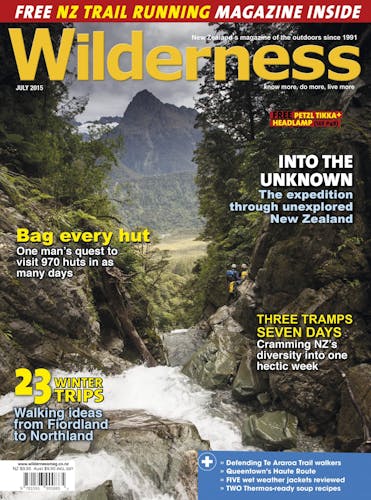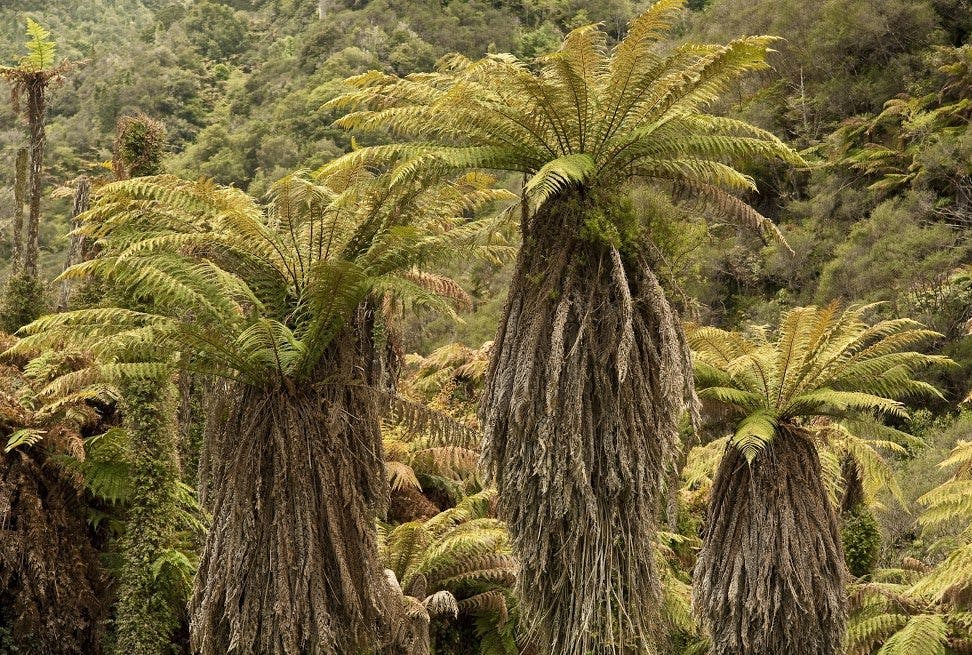Three places to see the brown tree fern
It’s the Victorian lady of New Zealand tree ferns; a substantial plant with a splay of dead fronds so voluminous that it resembles a woman’s skirt from those more chaste times. Wheki-ponga, or brown tree fern, is relatively widespread, occurring in both the North and South Islands, although it’s nowhere near as plentiful as its cousin wheki (rough tree fern). The two species are easily distinguished because wheki does not retain a full skirt of dead fronds (they tend to fall off) while wheki-ponga does. Some botanists have theorised that retaining the skirt helps prevent unwanted hitchhikers – vines or epiphytes – from attaching to their trunks, while others consider it a moisture-retention technique.
New Zealand tree ferns appear similar, but the most common ones are relatively easy to identify. As well as the two species of wheki, there are three common tree ferns: silver fern, mamaku and katote. The easiest way of telling them apart is to look at the base of the fronds. Wheki have a hair-like covering; while tree ferns are flatter, more scale-like.
Silver fern is easily identified by the pale underside of the fronds. Mamaku is the tallest of the native tree ferns (reaching up to 20m) and has the thickest fronds, which are often a dark-chocolate verging on black (some trampers play a nasty trick of putting scales from this plant in someone’s underpants; apparently it itches like hell). Katote is the most common tree fern. It also retains a skirt – although much less thick than wheki-ponga.
The slow-growing wheki-ponga reaches about six metres, with some specimens living as long as 100 years.
1. Leitchs Hut, Whareorino Conservation Area, King Country
This comfortable 16-bunk hut lies in a substantial grassy clearing, dating back to an early attempt to farm the area by pioneer Sam Leitch. It’s reached after a three-hour tramp, with wheki-ponga lining the track in many places.
2. Mangapurua-Kaiwhakauka Track, Whanganui National Park
Beginning from Blue Duck Station, at Whakahoro, the Kaiwhakauka Track links with the Mangapurua Valley, ending at the Bridge to Nowhere and the Whanganui River. Both valleys are famous as the site of a failed farming settlement. While there are no huts, several clearings provide camping spots beside the track, often with wheki-ponga on the edges.
3. Pelorus Bridge Scenic Reserve, Marlborough
Pelorus Bridge is well known for its magnificent view of the emerald-green Pelorus River, one of the highlights of the drive along SH6 between Blenheim and Nelson. In the surrounding scenic reserve, there is a camping area, shelter, and worthwhile loop walk, set aside to preserve a remnant of podocarp forest. Wheki-ponga are prominent on the grassy flat near the shelter.








